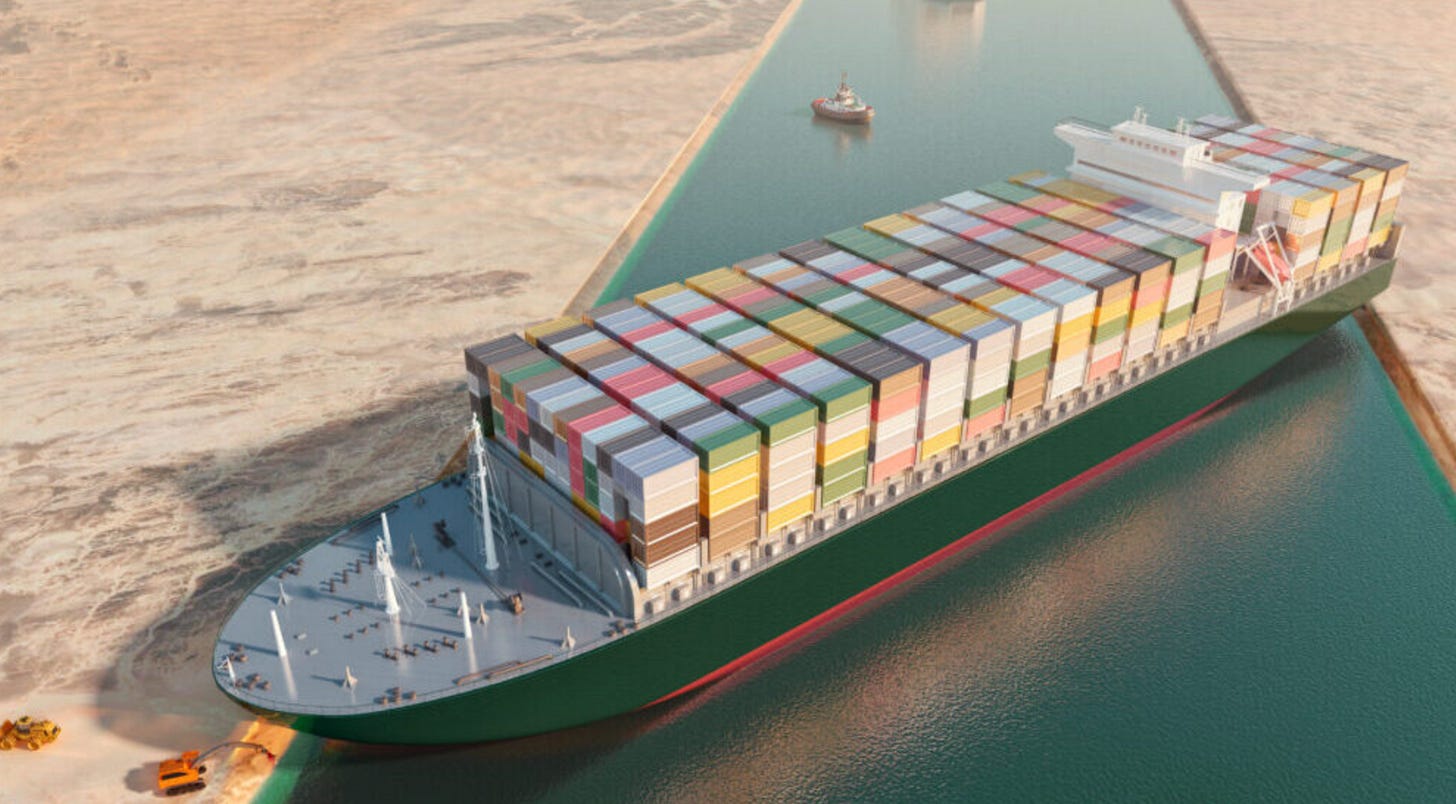What can a container ship stuck in the Suez Canal teach you about holding a stock position? Ordinarily, one wouldn’t expect a book on civil engineering projects gone awry to contain much in the way of advice for investors. Fortunately, Bent Flyvbjerg’s terrific work How Big Things Get Done: The Surprising Factors Behind Every Successful Project, from Home Renovations to Space Exploration, is a welcome exception, and delivers a whole host of lessons that are extremely relevant to the realm of stock picking. My favorite by far is what Flyvberg dramatically refers to as, ‘The Window of Doom’:
Projects that fail tend to drag on, while those that succeed zip along and finish. Why is that? Think of the duration of a project as an open window. The longer the duration, the more open the window. The more open the window, the more opportunity for something to crash through and cause trouble, including a big, bad black swan. What could that black swan be? Almost anything. It could be something dramatic, like an election upset, a stock market collapse, or a pandemic. After Covid-19 emerged in January 2020, projects all over the world—from the 2020 Tokyo Olympics to the release of the James Bond movie No Time to Die—were delayed, postponed, or scrapped altogether. Events such as these may be extremely unlikely on any given day, month, or year. But the more time that passes from the decision to do a project to its delivery, the greater their probability.
Flyvberg illustrates this with the arresting story of how mere gusts of wind led to the obstruction of one of the main arteries of globalization:
It’s hard to think of anything more trivial to most people around the world than gusts of wind in the Egyptian desert. Yet on March 23, 2021, it was just such gusts, at just the wrong moment, that pushed the bow of Ever Given, a giant container ship, into a bank of the Suez Canal. The ship got stuck and couldn’t be budged for six days, blocking the canal, halting hundreds of ships, freezing an estimated $10 billion in trade each day, and sending shocks rippling through global supply chains. The people and projects who suffered as a result of those supply-chain troubles may never have realized it, but the cause of their trouble was ultimately strong winds in a faraway desert.
Thus, when dealing with complex interdependent systems, it’s important to remember that minor things can and often do lead to catastrophic nonlinear outcomes. What the sociologist Charles Perrow arrestingly termed, ‘Normal Accidents’.
The moral of the story? Flyvberg points to one inescapable lesson:
From the dramatic to the mundane to the trivial, change can rattle or ruin a project—if it occurs during the window of time when the project is ongoing. Solution? Close the window. Of course, a project can’t be completed instantly, so we can’t close the window entirely. But we can make the opening radically smaller by speeding up the project and bringing it to a conclusion faster. That is a main means of reducing risk on any project. In sum, keep it short!
I’ve found this to be a helpful framework for thinking about the holding duration of an investment. In most cases, a longer holding period only increases the likelihood of things going wrong. Yes, compounding inevitably takes time, but one has to be discerning and objective about the real probabilities involved. Most investing picks are middling, not multi-baggers. As Ian Cassell succinctly puts it:
You can’t say “I’m going to hold this stock for 5-10-20 years”. You can't predict the future. No, you are going to hold it as long as management executes. It could be 3 months or 30 years. Most companies will only deserve to be rented. Ownership is earned.
Ownership is earned. Close the window on the rest.
Simple, right?




